Swaminatha Swamy Temple Swamimalai
Swaminatha Swamy Temple, also known as Swamimalai Murugan Temple, is a significant Hindu shrine located in Swamimalai, a town near Kumbakonam in the state of Tamil Nadu, India. It is one of the six Arupadaiveedu (Six Holy Abodes) of Lord Murugan, the Hindu god of war and victory.
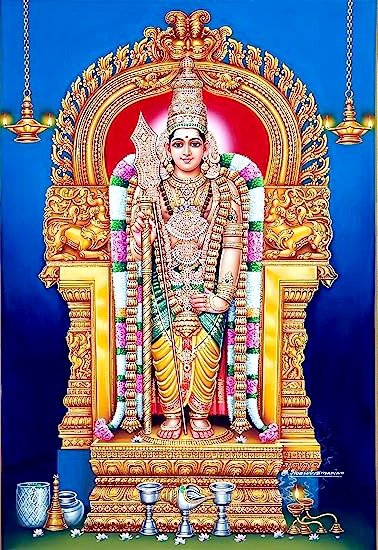
The temple is situated on a small hillock, which is symbolic of Lord Murugan’s divine abode. The word “Swamimalai” translates to “the hill of the lord.” It is believed that Lord Murugan imparted divine knowledge to his father, Lord Shiva, on this hill, hence it is considered a sacred place.
The shrine is renowned for its unique feature, which is the significance given to education and the process of learning. Lord Murugan is revered here as the Teacher (Guru) who imparts knowledge and wisdom. It is believed that Lord Murugan himself taught the sacred hymns of Tamil literature, known as “Tiruppugazh,” to the poet-saint Arunagirinathar on this hill.
The main deity of the temple is Lord Murugan, depicted as a child with one foot on a peacock, holding a staff in one hand and a divine scripture (book) in the other. The shrine of the presiding deity is located at the top of the hill, and visitors have to climb a flight of 60 steps to reach it.
The temple complex also houses various other shrines dedicated to different deities, including Lord Shiva, Goddess Parvati, Lord Ganesha, and Lord Karthikeya (another form of Lord Murugan). The architecture of the shrine showcases the Dravidian style, characterized by intricately carved pillars and beautifully adorned halls.
The Swamimalai Murugan Temple is a popular pilgrimage site and attracts devotees from far and wide, especially during the festival of Skanda Sashti. Skanda Sashti is a six-day festival celebrated in honor of Lord Murugan, and the shrine witnesses elaborate processions, rituals, and devotional activities during this time.
Read More>> Shree Trishrota Maa Bhramoree Debir Shaktipeeth Temple
Contents
- 1 Legend of Swaminatha Swamy Temple:
- 2 Religious Significance of Swamimalai Murugan Temple:
- 3 Speciality of Swaminatha Swamy Temple:
- 4 Temple Timing of Swamimalai Murugan Temple:
- 5 FAQ:
- 5.1 Q: Where is Swamimalai Murugan Temple located?
- 5.2 Q: When was Swamimalai Murugan Temple built?
- 5.3 Q: What is the significance of Swamimalai Murugan Temple?
- 5.4 Q: What are the main deities worshipped at Swamimalai Murugan Temple?
- 5.5 Q: What are the festivals celebrated at Swamimalai Murugan Temple?
- 5.6 Q: What are the timings of Swamimalai Murugan Temple?
- 5.7 Q: What is the dress code for visiting Swamimalai Murugan Temple?
- 5.8 Q: Are there any special rules or regulations for visiting Swamimalai Murugan Temple?
- 5.9 Q: Where can I stay near Swamimalai Murugan Temple?
- 5.10 Q: Where can I eat near Swamimalai Murugan Temple?
- 5.11 Q: How can I get to Swamimalai Murugan Temple?
- 6 How to reach the temple:
- 7 Google Maps:
Legend of Swaminatha Swamy Temple:
According to the Skanda Purana, a sacred Hindu scripture, there was a divine competition between Lord Murugan and Lord Ganesha to determine who would be the recipient of the divine fruit (known as Gnanapazham) that would grant supreme knowledge. Lord Murugan circumambulated the universe to gain knowledge, while Lord Ganesha simply circled around Lord Shiva and Goddess Parvati, symbolizing the importance of parental reverence.
Upon returning, Lord Murugan discovered that Lord Ganesha had already been awarded the divine fruit. Feeling disappointed, Lord Murugan expressed his anger and frustration to his parents, and Lord Shiva advised him that true knowledge comes from understanding the meaning of the Pranava Mantra, “AUM” (or “OM”).
Establishment of Swaminatha Swamy Temple:
Impressed by Lord Murugan’s humility and devotion, Lord Shiva decided to grant him divine knowledge and chose Swamimalai as the location to impart this wisdom. Swamimalai is believed to be the place where Lord Murugan taught Lord Shiva the essence of Pranava Mantra.
It is said that the Swaminatha Swamy Temple was built on the very spot where Lord Murugan imparted this knowledge to Lord Shiva. The shrine was constructed to commemorate this divine event and has since become an important pilgrimage site.
Read More>> Manibandh Shakti Peeth Pushkar
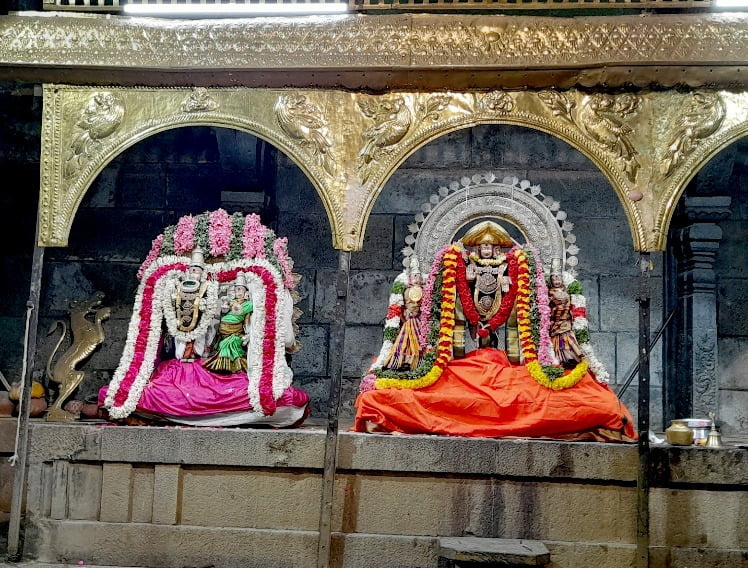
Historical Significance of Swaminatha Swamy Temple:
The exact origins of the temple are not known, but it is believed to have been in existence for several centuries. The shrine has undergone renovations and expansions over time, with contributions from various rulers and devotees.
Architecture and Features of Swaminatha Swamy Temple:
The Swaminatha Swamy Temple follows the traditional Dravidian architectural style. The temple complex consists of several structures, including the main shrine dedicated to Lord Murugan as Swaminatha Swamy. The deity is depicted with six faces, representing his role as the divine teacher.
One of the unique features of Swamimalai Murugan Temple is the flight of 60 steps leading to the main sanctum, representing the 60 Tamil years. The steps signify the progressive ascent towards divine knowledge. The temple also houses other deities such as Lord Ganesha, Lord Shiva, and Goddess Parvati.
Read More>> Sri Puri Jagannath Temple: The Lord of the Universe
Religious Significance of Swamimalai Murugan Temple:
The Swaminatha Swamy Temple is considered a sacred place of worship for devotees of Lord Murugan. It is believed that by offering prayers and seeking the blessings of Lord Murugan here, one can attain knowledge, wisdom, and spiritual enlightenment.
The shrine attracts a significant number of devotees, particularly during festivals like Skanda Sashti, Thai Poosam, and Panguni Uthiram, when special rituals and celebrations take place.
The Swaminatha Swamy Temple at Swamimalai stands as a symbol of the divine knowledge imparted by Lord Murugan and continues to be a revered pilgrimage destination for devotees seeking spiritual enlightenment and blessings from the deity.
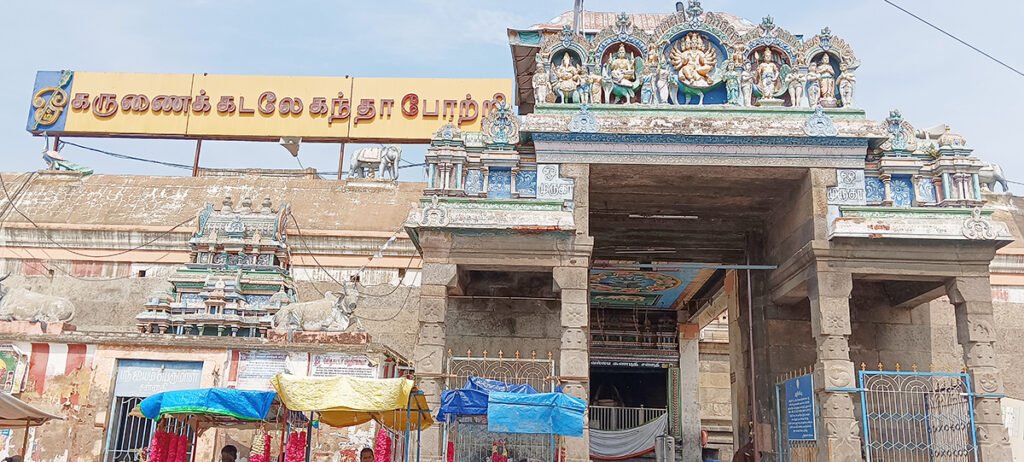
Speciality of Swaminatha Swamy Temple:
Skanda-Murugan’s Iconography: The temple is renowned for its unique representation of Lord Murugan. The idol of Swaminatha Swamy in this shrine depicts him as a Guru (teacher) rather than a child or warrior. Lord Murugan is shown standing with a staff in his hand and a book in the other, emphasizing his role as the divine teacher imparting knowledge and wisdom.
Lord Murugan as Balasubrahmanya: The Swaminatha Swamy Temple is known as the place where Lord Murugan, also called Balasubrahmanya, imparted knowledge to his father, Lord Shiva. Legend has it that Lord Murugan took the role of a Guru and explained the essence of the Pranava Mantra (“Om”) to Lord Shiva on top of the Swamimalai hill. This unique aspect highlights the shrine’s significance as a place of divine teaching and spiritual enlightenment.
Six Sacred Steps: One of the distinctive features of the Swaminatha Swamy Temple is the sacred flight of steps, known as the “Arupadai Veedu steps.” These steps symbolize the six abodes of Lord Murugan and represent the spiritual journey of devotees. Climbing these steps is considered auspicious and is believed to lead to spiritual progress and enlightenment.
Panchamrita Abhishekam: A significant ritual performed in the shrine is the Panchamrita Abhishekam, where the idol of Swaminatha Swamy is anointed with five sacred substances—milk, curd, honey, ghee, and sandalwood paste. Devotees believe that participating in this abhishekam brings blessings, good fortune, and the fulfillment of desires.
Thai Poosam Festival: The Thai Poosam festival celebrated at the Swaminatha Swamy Temple is a grand and vibrant event. It takes place in the Tamil month of Thai (January-February) and attracts a large number of devotees. The festival involves processions, music, dance, and various rituals, including the carrying of Kavadis (elaborate structures) by devotees as acts of penance and devotion.
Divine Murugan Bhakti: The Swaminatha Swamy Temple holds immense significance among devotees who have a deep devotion for Lord Murugan. It is considered a powerful place for seeking the blessings of Lord Murugan, especially for knowledge, wisdom, and spiritual growth.
Read more>> Arupadai veedu | Six Abodes of Lord Murugan
Temple Timing of Swamimalai Murugan Temple:
Morning:
5:30 AM to 12:30 PM – The temple is open for darshan during this time.
Afternoon:
1:00 PM to 4:30 PM – The shrine remains closed for darshan.
Evening:
4:30 PM to 8:30 PM – The temple reopens for darshan in the evening.
Please note that these timings are subject to change and may vary on special occasions, festivals, and certain days of the week. It is always recommended to check the current timings before planning your visit to Swamimalai Swaminatha Swamy Temple.
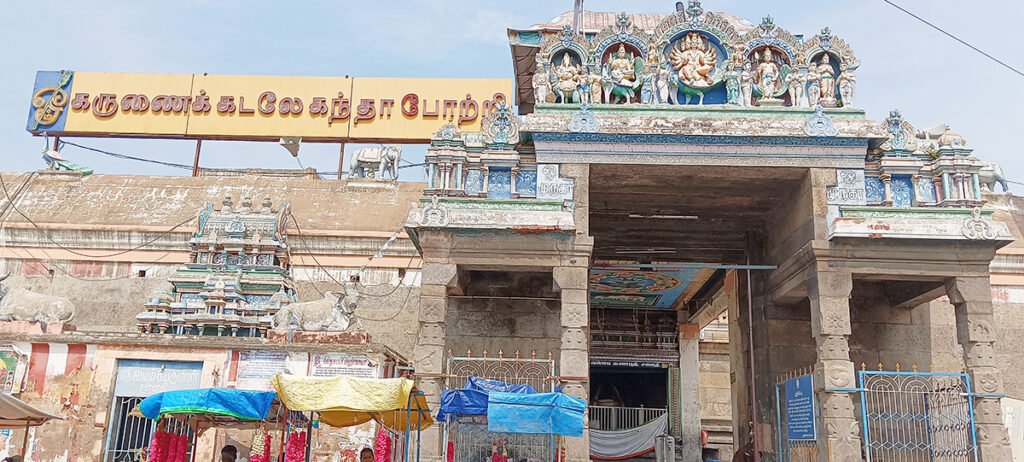
Places to visit near Swaminatha Swamy Temple:
Kumbakonam: Located about 9 kilometers away from Swamimalai, Kumbakonam is a renowned temple town known for its rich cultural and architectural heritage. Some of the prominent temples to visit in Kumbakonam include the Adi Kumbeswarar Temple, Nageswaran Temple, Sarangapani Temple, and Kasi Viswanathar Temple. You can also explore the Mahamaham Tank, which is considered sacred and hosts the Mahamaham festival every 12 years.
Darasuram: Situated approximately 20 kilometers from Swamimalai, Darasuram is home to the UNESCO World Heritage Site, Airavatesvara Temple. This shrine is dedicated to Lord Shiva and showcases exquisite Chola architecture. The intricate stone carvings and the temple’s overall grandeur are worth exploring.
Thanjavur: Located about 35 kilometers from Swamimalai, Thanjavur is renowned for the Brihadeeswarar Temple, another UNESCO World Heritage Site. This shrine is an architectural marvel and showcases the Chola dynasty’s architectural brilliance. Apart from the temple, you can visit the Thanjavur Royal Palace and Art Gallery, which houses a collection of artifacts and artwork from the region’s history.
Thirunageswaram: Situated around 19 kilometers from Swamimalai, Thirunageswaram is famous for the Rahu Temple. It is believed that worshiping at this shrine can help alleviate the negative effects of the planet Rahu according to Hindu astrology. The temple’s architecture and the serene surroundings make it a worthwhile visit.
FAQ:
Q: Where is Swamimalai Murugan Temple located?
A: Swamimalai Murugan Temple is located in Swamimalai, a neighborhood in Kumbakonam, Thanjavur district, Tamil Nadu, India. It is about 6 kilometers from Kumbakonam Railway Station and 40 kilometers from Thanjavur Railway Station.
Q: When was Swamimalai Murugan Temple built?
A: Swamimalai Murugan Temple is believed to have been built in the 6th century AD by the Pallava king, Mahendravarman I. It was later renovated by the Chola, Pandya, and Vijayanagara kings.
Q: What is the significance of Swamimalai Murugan Temple?
A: Swamimalai Murugan Temple is one of the six most sacred Abodes of Murugan, also known as Arumugam or Subramanya. It is also one of the Pancha Bootha Sthalams, or five elemental temples of Murugan, representing the element of fire.
Q: What are the main deities worshipped at Swamimalai Murugan Temple?
A: The main deity worshipped at Swamimalai Murugan Temple is Murugan, also known as Arumugam or Subramanya. He is worshipped in the form of a Swayambumurthi, or self-manifested idol. The temple also houses shrines to various other deities, including Valli, Deivanai, Vinayaka, and Ganesha.
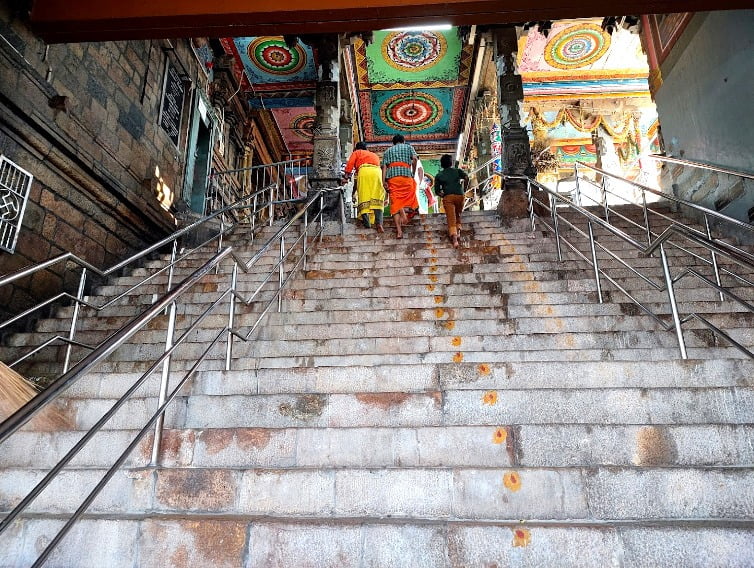
Q: What are the festivals celebrated at Swamimalai Murugan Temple?
A: The main festivals celebrated at Swamimalai Murugan Temple are the Skanda Shashti festival in October-November, the Vaikasi Visakam festival in May-June, and the Thai Poosam festival in January-February.
Q: What are the timings of Swamimalai Murugan Temple?
A: Swamimalai Murugan Temple is open from 6:00 AM to 12:00 PM and from 4:00 PM to 8:00 PM.
Q: What is the dress code for visiting Swamimalai Murugan Temple?
A: Devotees are advised to wear decent clothing when visiting Swamimalai Murugan Temple. Men are advised to wear dhotis or kurtas, and women are advised to wear sarees or salwar kameez.
Q: Are there any special rules or regulations for visiting Swamimalai Murugan Temple?
A: Devotees are not allowed to wear footwear inside the temple. They are also not allowed to take photographs or videos inside the temple.
Q: Where can I stay near Swamimalai Murugan Temple?
A: There are a number of hotels and guesthouses located near Swamimalai Murugan Temple. Devotees can also stay at the temple’s own guest house.
Q: Where can I eat near Swamimalai Murugan Temple?
A: There are a number of restaurants located near Swamimalai Murugan Temple serving both vegetarian and non-vegetarian food. Devotees can also eat at the temple’s own canteen.
Q: How can I get to Swamimalai Murugan Temple?
A: Swamimalai Murugan Temple is well-connected by road, rail, and air. Devotees can take a taxi or bus from Kumbakonam Railway Station or Thanjavur Railway Station. They can also fly to Thanjavur Airport and take a taxi or bus to the temple.
How to reach the temple:
By Air:
The nearest airport to Swamimalai is Tiruchirappalli International Airport, located approximately 85 kilometers away. From the airport, you can hire a taxi or take a bus to reach Swamimalai. The temple is about 9 kilometers from Kumbakonam, which is the nearest major town.
By Train:
The closest railway station to Swamimalai is Kumbakonam Railway Station, which is well-connected to major cities in Tamil Nadu and other parts of the country. From Kumbakonam, you can take a taxi or a local bus to reach Swamimalai, which is about 9 kilometers away.
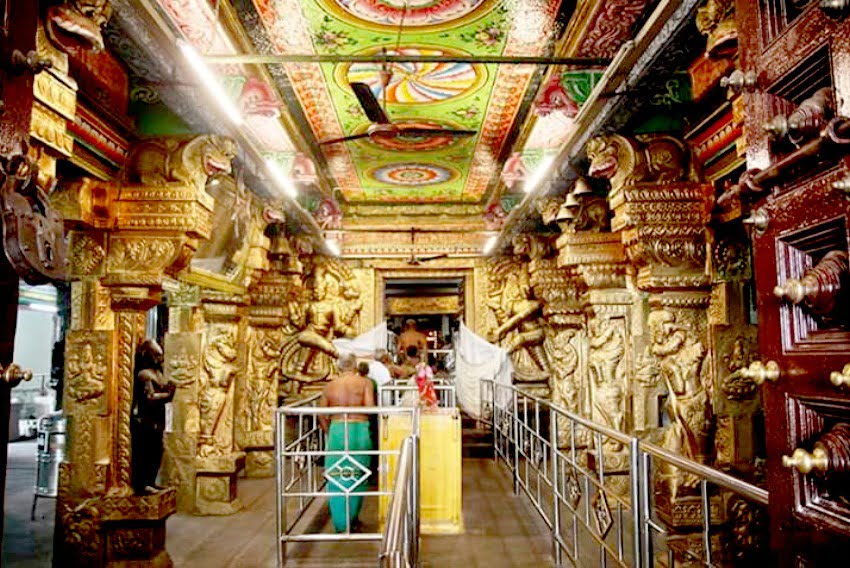
By Road:
Swamimalai is well-connected by road, and you can easily reach the temple by bus, taxi, or private vehicle. Here are a few options:
From Kumbakonam: Swamimalai is approximately 9 kilometers from Kumbakonam. You can take a local bus or hire a taxi to reach the temple, which takes approximately 20-30 minutes.
From Chennai: Swamimalai is around 290 kilometers from Chennai. You can take a bus or hire a taxi from Chennai to reach Kumbakonam, and then proceed to Swamimalai as mentioned above.
From Madurai: Swamimalai is located about 210 kilometers from Madurai. You can take a bus or hire a taxi from Madurai to reach Kumbakonam, and then continue to Swamimalai.
Local Transport:
Once you reach Swamimalai, you can easily find local transportation options such as auto-rickshaws or cycle rickshaws to reach Swaminatha Swamy Temple. The shrine is located atop a small hill, and there are steps leading to the shrine. You can climb the steps or use the pathway to reach the temple.
